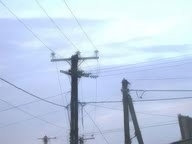Here’s a story by an electrical engineer. Let’s see what he has learned during his work experience in Ethiopia…
I had worked in a power corporation in a MV / LV distribution section. The company I used to work is based in Ethiopia and it is the sole electrical power generating and distributing firm in the country.
Electrical distribution designs were mostly prepared for new installations and major expansions. Preliminary studies were made with load forecasts for a few years ahead. Ratings were determined taking load factors in to consideration and overload protection devices were put in place for most of the equipments on the line. However there were frequent incidents of LV side fuse blowouts especially on older networks. A decade or two ago, the networks were new and customer loads were way below the networks’ design capacity.
However, over the years almost each house hold doubled or tripled its load and the power company did not realize the aggregate effect in time. More attentive considerations were only given to larger changes in demand and design improvements were only made to these areas. Due to this, it is still common to see distribution network failures in older residential areas especially on eves and holidays. Eves and holidays are when the design load factor is no longer valid and the distribution networks will be overloaded beyond the design considerations. One might say that this is a common problem in a developing country and it might take more than a while to realize these consequences. But the maintenance costs spike at times mainly due to this while all it takes was improving the design.
I am now working in an aerospace environment and there are strict standards and regulations in the industry which force vessel operators to make sure that any modification (that is the addition or removal of electrical loads) needs to address electrical load issues. Electrical load analysis needs to be done once a while to check if available electrical power is able to support all the loads and whether critical loads can be supported in emergency conditions. Of course in this scenario vessels are self contained and human life is always at stake.
Even though there is a huge difference between the two industries, I believe that the power companies could adopt some of the standards in the aerospace industry. I think periodic actual load analysis needs to be made on the distribution networks to determine load changes. From this the power companies can evaluate whether the supply line or the specific distribution transformer can support the growing demand or a peak loading like on holidays. I suppose this is the best proactive measure to loading problems and improving customer services.
I do not know what the distribution network design procedures are regulated in the more developed section of the world. How are the power or distribution companies handling growing consumer demands on a specific network?
Did this testimony bring you back memories? Do you think a career on eletrical engineering is really different according to the part of the globe you live in?
